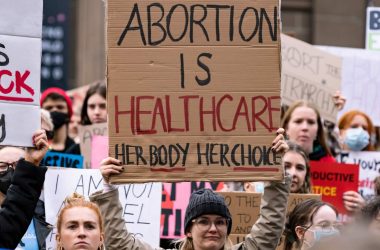Washington, DC—(ENEWSPF)—January 9, 2014.
By Health & Human Services Secretary Kathleen Sebelius and Congresswoman Debbie Wasserman Schultz
We choose to wear pink, because year after year, breast cancer takes the lives of our daughters. Our sisters. Our mothers and grandmothers. Our aunts. Our neighbors. Our colleagues. Our friends. We lose nearly 40,000 Americans to this disease each year, which is the second only to lung cancer as the leading cause of cancer death among women in this country.
And yet, there is hope.
Working together as Americans united in the fight against this disease, we’ve been driving mortality rates down. We’re detecting it earlier. We’re treating it more effectively. And we’re standing shoulder-to-shoulder with more than 2.8 million breast cancer survivors in our country.
We are making significant advancements in combating this disease –and for women who are shown to be at a higher relative risk for breast cancer, today, access to early treatments can improve their health.
Based on a robust review of the evidence, an independent panel of experts known as the United States Preventive Services Task Force – or USPSTF – recently recommended that clinicians offer to prescribe chemo-preventive medications like tamoxifen or raloxifene for women who are at an increased risk (provided they are also at a low risk for adverse effects of the medication). The American Society of Clinical Oncology has also recommended these medications to certain women who are at a higher risk.
These are risk-reducing medications which have been shown in randomized, controlled trials to significantly reduce the relative risk for certain types of breast cancer in women who are at an increased risk for this disease. But there have been questions as to whether these medications are considered prevention for the purpose of consumer protections.
So today the Department of Health & Human Services (HHS) issued guidance to clarify that under the Affordable Care Act, most health insurance companies and employer plans must cover tamoxifen and raloxifene – like other recommended preventive services – without co-pays or other out of pocket expenses for women at increased risk for breast cancer.
Access to medications like tamoxifen or raloxifene is just one of many ways the Affordable Care Act is helping the fight against cancer.
Through the Health Insurance Marketplace, the new health care law is also helping by making health care more affordable and accessible to millions of Americans. And when you consider that Americans who are uninsured and diagnosed with cancer are 60 percent more likely to die from that cancer than those who have insurance – the work that we do together to expand access to health insurance is work that saves lives.
Together with the hope and hearts of survivors in every part of our country, we have more than 2.8 million reasons for hope in the fight against breast cancer.
At HHS, we are committed to the cause of expanding access to these potentially life-saving medications to women whose physicians recommend them.
Congresswoman Debbie Wasserman Schultz represents Florida’s 23rd Congressional District and is a breast cancer survivor who carries the BRCA 2 genetic mutation and uses tamoxifen as part of her ongoing treatment.
Source: hhs.gov








